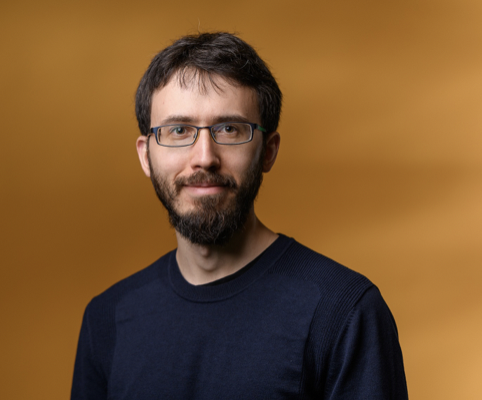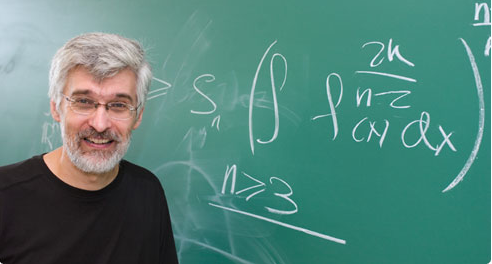Editor's note: Since this story was first published in July 2021, Michael Loss has also been invited to present alongside Jennifer Hom and Konstantin Tikhomirov at ICM 2022. Learn more in the School of Mathematics newsroom.
Like the Olympics, the International Congress of Mathematicians only meets once every four years. Like that global athletic competition, medals are presented to those who excel. In this case, they’re presented to those with breakthrough research on subjects like topology, random matrices, combinatorics.
Simply being asked to present research at an ICM is, as Davide Castelvecchi wrote in a 2015 Nature story, “the equivalent, in this community, of an induction to a hall of fame.” So imagine the pride at the School of Mathematics when it learned that it will have not one, but two lecturers at the 2022 ICM, scheduled for July 6-14 in St. Petersburg, Russia. Associate Professor Jennifer Hom and Assistant Professor Konstantin Tikhomirov have accepted invitations from ICM committees to speak at the conference.
“The ICM speaker invitations are a major news item in the mathematics community every four years. The invitations carry very high prestige, selected with extreme diligence to highlight leading breakthroughs across all of mathematics,” explains Rachel Kuske, Professor and Chair of the School of Mathematics. “An invitation signals innovative research that is driving future discovery. A single invitation in any cycle is a source of great pride for the home department of the speaker, and more than one is particularly noteworthy, reflecting the impressive talent joining the School in recent years. Of course, we are well aware that our pioneering colleagues Jennifer and Konstantin are leading the world in their fields, but we are very pleased by the community's agreement, via this exceptional international recognition.”
“It was a very pleasant surprise to get the email,” says Hom. “It wasn’t something that was on my radar. Most mathematicians do math because they find it interesting and challenging and fun, and things like this are the icing on the cake.”
The invitation also came as a surprise to Tikhomirov. “I was extremely happy, of course, and I didn’t expect it,” he says. “People usually get invited earlier. I was not really expecting this because it’s a hard thing, it’s a very rare event, once every four years.”
Hom echoes Kuske when she says having two Georgia Tech researchers speaking at ICM “speaks highly of the quality of math being done at the School of Mathematics.”
Hom hasn’t decided the specific topic of her lecture, but her mathematical research focuses on low-dimensional topology. Topology is the study of shapes and spaces that can be stretched, twisted, and otherwise deformed, but never broken or torn. These spaces are called manifolds; for example, the surface of a donut is a two-dimensional manifold. Low-dimensional topology is the sub-discipline interested in topological spaces of four or fewer dimensions. The study of manifolds can help bring simplicity to the understanding of more complex structures in math and physics.
“I’m lucky enough to sit and think about totally abstract things just for the sake of finding patterns,” she says. “There’s so much more to math than what people see in high school, or what average college students see in the math class. A lot of high school math is focused on getting you to calculus, and that’s a small part of the really cool math that’s out there.”
Tikhomirov’s research is in discrete probability, which tries to bring structure and predictability to chance in the form of modeling. Take a coin flip, for example. “If I could measure the parameters of the coins, and figure out how much muscle you use to flip the coin, and figure for the activity of neurons, I would be able to predict the outcome — heads or tails,” he explains. “But that’s too complicated” to compute outcomes in that way. “Probability, in that respect, is designed to model things. So you have a complicated system, and then you can construct a model that inherits some properties of real physical systems, but at least you can make some predictions.”
For More Information Contact
Renay San Miguel
Communications Officer II/Science Writer
College of Sciences
404-894-5209





